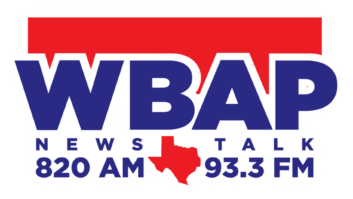OTTAWA — Across Canada, the AM band has been losing listeners for decades, as listeners move to stereo-friendly FM, the Web and audio streamed to smartphones. But the all-news format has been holding its own on the AM band. In fact, since 680CFTR in Toronto became 680News in 1993, stations in Edmonton and Calgary, Alberta; Vancouver, British Columbia; and in the Canadian capital, Ottawa, have converted to an all-news format.

COSTLY, BUT SUCCESSFUL
The limited distribution of all-news AM stations — there are also many news/sports talk AM stations in Canada — speaks to the costs associated in running such an operation. Compared to music stations that can use automated systems, all-news stations require a full staff.
As a result, the all-news format only makes sense in markets large enough to support such a station and its competitors. “The guys at 1010 WINS in New York City, who advised us on flipping CFTR to 680News in the 1990s, said they wouldn’t consider a market that was worth less than US$60 million in ad revenues,” said John Hinnen, vice president of 680News, and the person responsible the Rogers Radio all-news AMs in Calgary, Ottawa and Vancouver. “It makes sense: A market has to be big enough to pay for a full range of music stations. This is why we haven’t brought all-news to our smaller markets.”
At the same time, all-news formats can be money-makers. For instance, “680News is the top-billing station in Canada,” Hinnen said. Based on the autumn 2011 ratings for Toronto, 680News is the No. 4 station in the market, bracketed on both sides by FM music stations.

“But it’s not just our ratings that make the difference; it’s the nature of our listeners. People listen to the commercials more on AM news stations because they’re part of the information mix. This translates into greater value for our advertisers,” Hinnen said.
FROM MUSIC TO NEWS
A few decades ago, the Canadian AM band was awash in music stations, including Top Hit powerhouse 680CFTR. But then FM caught on during the 1970s and the slow decline of AM began. “After all, if you are going to listen to a great song, would you prefer to hear it on mono AM with its limited dynamic range, or in stereo on FM?” asks David Farough, vice president of brands, programming and content for Corus Entertainment; owner of iNews 880 in Edmonton, Alberta. “Right, you’ll tune to FM, which is why AM is in trouble.”
However, AM is good enough for talk stations, which is why so many AM broadcasters across North America have chosen some form of speech-based format. In fact, the Canadian market became saturated with news/talk stations years ago, which is why all-news stations are becoming an attractive alternative.

John Hinnen
As the pioneer in this field, it wasn’t easy for Rogers to make the initial plunge. At the time the notion was proposed, 680CFTR was making a million dollars a year in revenues.
Still, then-Rogers Broadcasting President Tony Viner could see the writing on the wall, which is why he pitched the concept to the company’s board and its chairman, Ted Rogers Jr.
Rogers could have been forgiven for balking at the idea. “But Ted had no problem agreeing with the switch, which was built upon the format developed by 1010 WINS,” said Hinnen. “So we went ahead.”
Three years later, Rogers turned its Vancouver country music station CKWX(AM) into News1130; this time using a half-hour all-news format developed by KYW Newsradio in Philadelphia.
“We subsequently moved 680News to the KYW half-hour clock as well,” Hinnen said. CFFR in Calgary switched from oldies to 660 News in 2006, and Ottawa’s CIWW went from oldies to 1310News in 2010.
Meanwhile, Corus flipped Edmonton’s CHQT from adult hits to iNews 880 in 2008.
GOOD RESULTS, BUT …

David Farough
Today, all-news is proving to be a reliable performer for both Rogers and Corus on AM. But both companies would move their all-news operations to FM if they could get the chance.
The reason? AM is so unfamiliar to younger listeners that many Canadians aren’t even aware of it; let alone tune in. “It has gotten so bad, that some car manufacturers are leaving AM off their in-dash entertainment systems,” Farough said.
Both Roger and Corus have been pushing back by promoting their all-news through their FM music stations, and making their all-news feeds available through the Web. “Still, if the regulator would allow us to move to FM, we would,’ said Hinnen. “The
problem is that each radio group is only allowed to own two FM and two AM stations in each market, and no more. To flip one of our all-news AMs to FM, we would have to sell one of our current FM stations, and that wouldn’t make business sense.”
“If I had my way I’d be on both AM and FM,” said Hinnen. “AM travels further distances and FM would penetrate the downtown core more.”
For the time being, all-news radio seems destined to remain on AM here in Canada. Even in the 21st century, people are tuning into this format on AM radio — including younger listeners who have learned about AM from FM and the Web.












